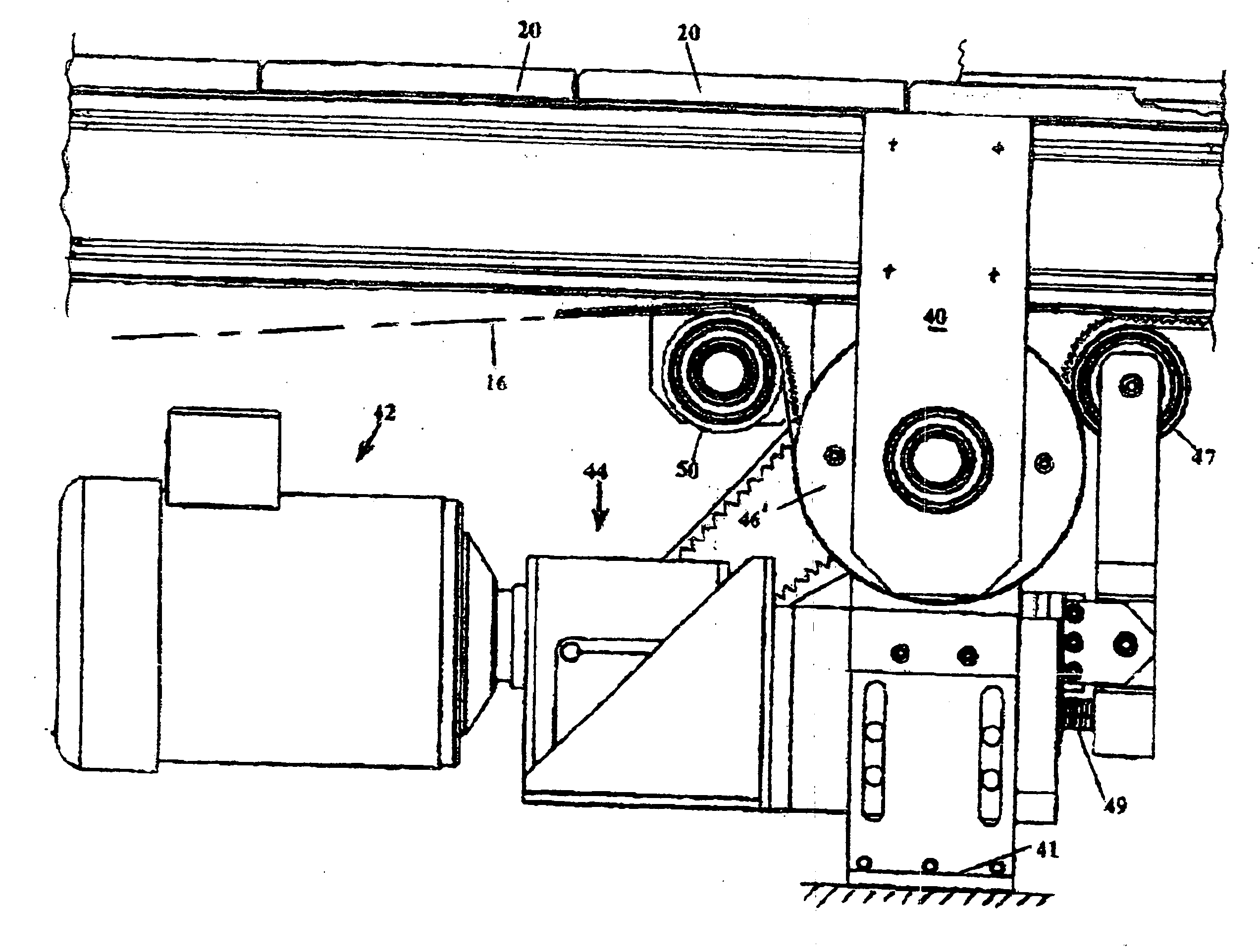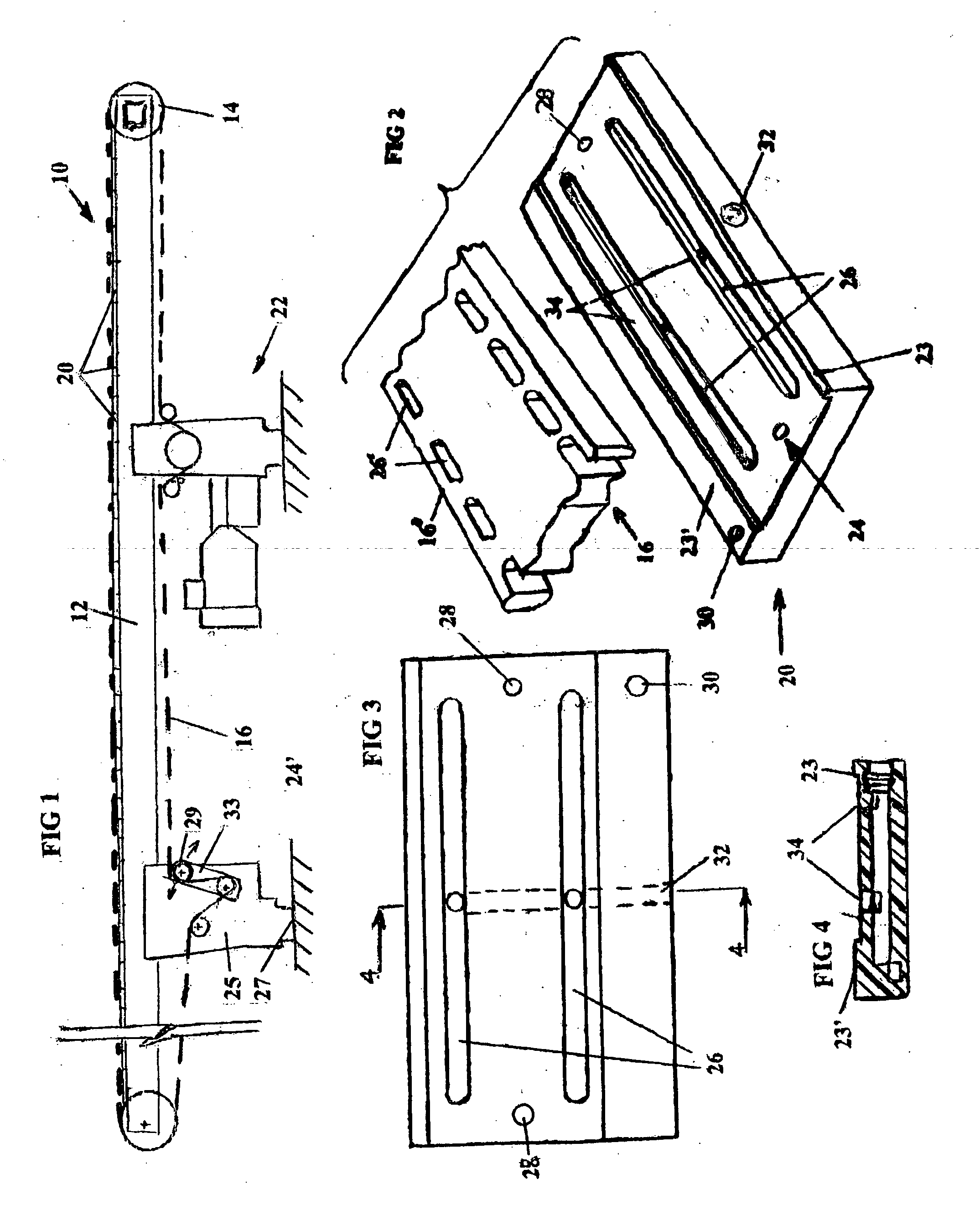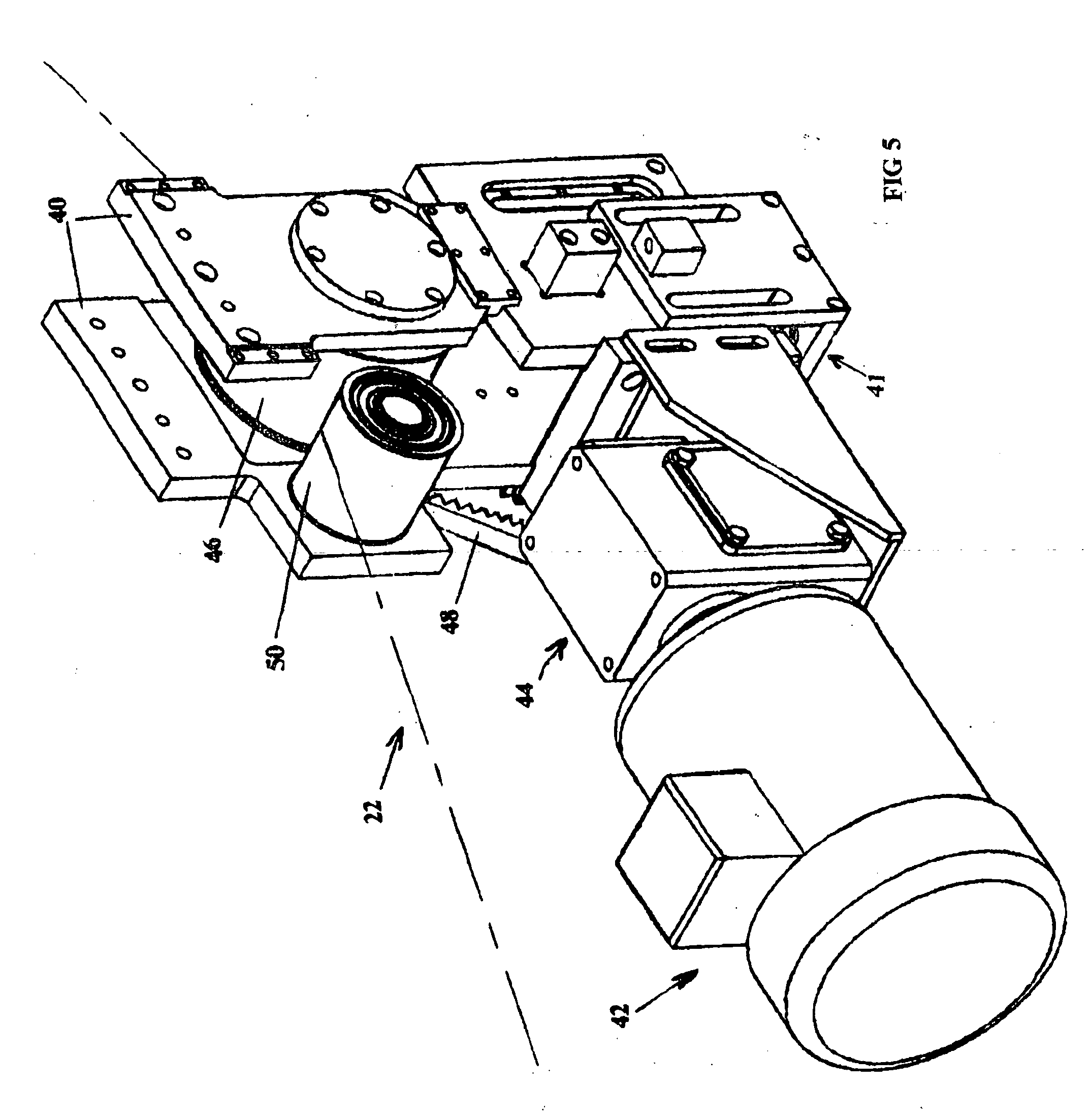Vacuum belt conveyor system
- Summary
- Abstract
- Description
- Claims
- Application Information
AI Technical Summary
Benefits of technology
Problems solved by technology
Method used
Image
Examples
Embodiment Construction
[0079] Referring to FIG. 1, the conveyor, 10 has an extended beam 12 of extruded aluminum section, a first embodiment being typically an 80×80 m.m section (see FIGS. 7 & 8) that runs the length of the conveyor 10. A second embodiment of a beam section is shown in FIG. 7A (to a smaller scale), having four significantly larger galleries. An on-going end roll 14 and an off-going end roll 14′ are mounted at the ends of the beam 12, about which rolls 14, 14′ an endless perforated conveyor belt 16 is trained (see FIGS. 5 and 6).
[0080] A location encoder 15 is driven by one of the end rolls, shown as being the ongoing roll. A series of vacuum blocks 20 extend the length of the conveyor 10, being mounted upon the beam 12.
[0081] A belt drive 22 is located beneath the beam 12, in supporting relation therewith, being positioned in the mid-section of the conveyor 10, in spaced relation from the end rolls. The belt 16 is entrained with the belt drive 22.
[0082] The other end of the conveyor 12...
PUM
 Login to View More
Login to View More Abstract
Description
Claims
Application Information
 Login to View More
Login to View More - R&D
- Intellectual Property
- Life Sciences
- Materials
- Tech Scout
- Unparalleled Data Quality
- Higher Quality Content
- 60% Fewer Hallucinations
Browse by: Latest US Patents, China's latest patents, Technical Efficacy Thesaurus, Application Domain, Technology Topic, Popular Technical Reports.
© 2025 PatSnap. All rights reserved.Legal|Privacy policy|Modern Slavery Act Transparency Statement|Sitemap|About US| Contact US: help@patsnap.com



